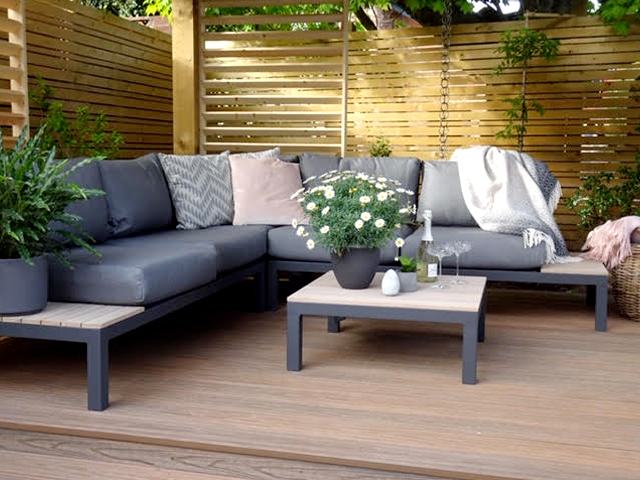Article courtesy of Composite Prime
As you plan your dream deck for the summer, one of the key choices you face is what type of decking to use. Traditional timber decking was the go-to product for most of the 20th century. And although it’s still very popular in the United States, here in the UK we are seeing a quick trend of consumers converting to timber deckings’ more charming cousin, the composite deck.
Growing by 100% a year, composite decking now has 20% market share, but why are we seeing this progressive change? To help inform you on the reasons why, we are giving you a comprehensive list of the pro’s and con’s of traditional and composite decking.
Advantages of traditional
‘There’s no school like the old school’
There are an abundance of materials and places to buy traditional decking from. As it has been on the market for so long, almost every decking store will house timber products. Additionally, this extended market time has allowed installation techniques to be well known and readily available, making it easy to install.
Cost effective
Typically, timber decking is a lower cost to buy than composites, especially in the initial purchase. Making the choice to acquire traditional timber decking less of a commitment and more readily available than it’s composite counterpart.
Shopping for trees
There are a variety of wood types that you can use for traditional decking. Hardwoods are a popular material type which have the advantage of impressive feats of strength. However this material is a similar price to composite products and tends to be harvested from tropical forests, which can cause a large amount of deforestation.
Advantages of composite
Safety
It’s more slip resistant! As composite is a part plastic product, mildew and mold does not grow on it’s surface. Making composite decking more resistant to causing slips and falls.
Environmentally friendly (in some cases)
Composite Prime® uses recycled materials such as plastics bottles to make our composite products. This decreases the amount of toxic plastics going in our oceans and landfills and strives to make a contribution to change the way we manufacture. Additionally the amount of deforestation to make the decking is decreased exponentially, making some composite materials environmentally conscious.
Cost effective?
Although initially more expensive, over time, composite decking can become a more cost-effective option in direct comparison to timber decking. Taking into account the upkeep of timber decking, which includes staining the wood, and regularly stripping the surface, composite decking comes with very little upkeep costs. Due to there being less maintenance required, there is more time to unwind and relax.
Immortality! – Being forever beautiful
It lasts much longer! As it is a plastic product, composite decking will not rot or decay, meaning it’s durability will hold throughout the years. As well as this, it will look nice all year round, which makes the composite decking a more aesthetically pleasing choice.
Check-mate

It seems the choice to purchase traditional or composite decking depends on many factors. Having evaluated both sides, it’s clear what our preference is. The number of advantages composite decking has on nature’s own prototype is hard to ignore… but ultimately the choice is up to you!

